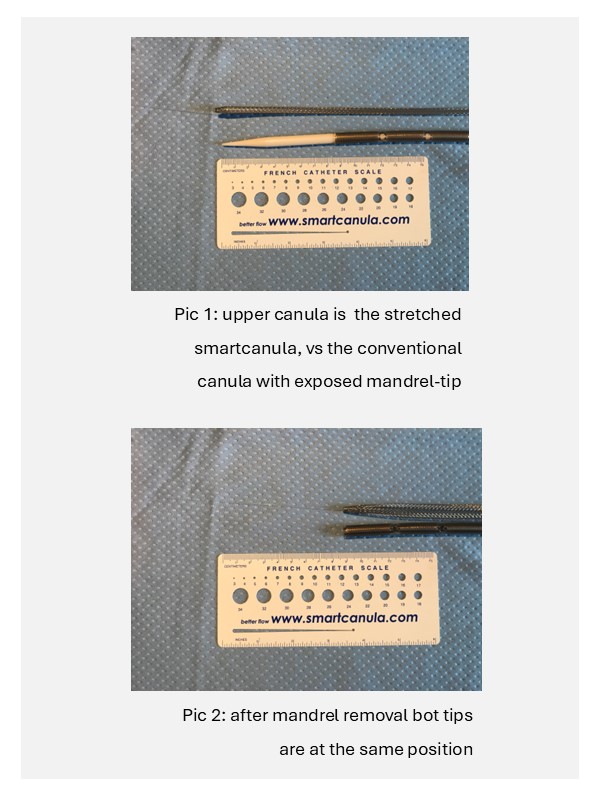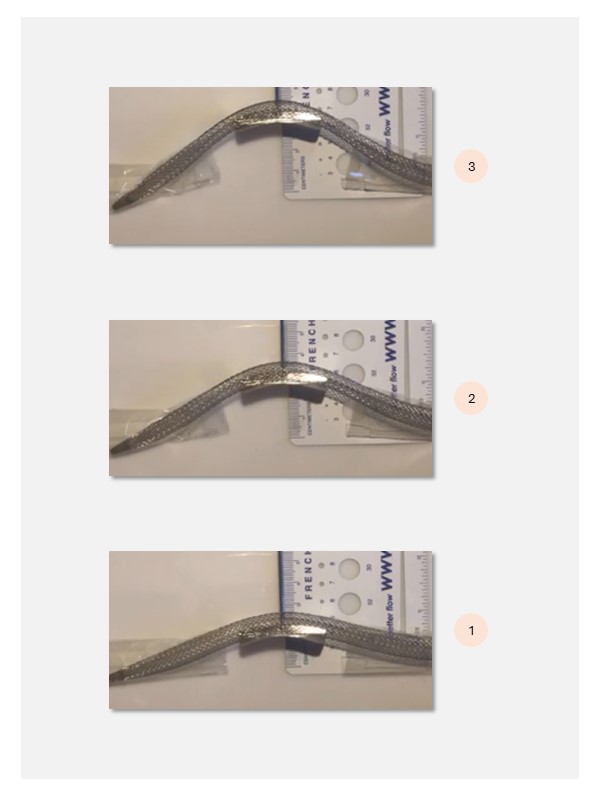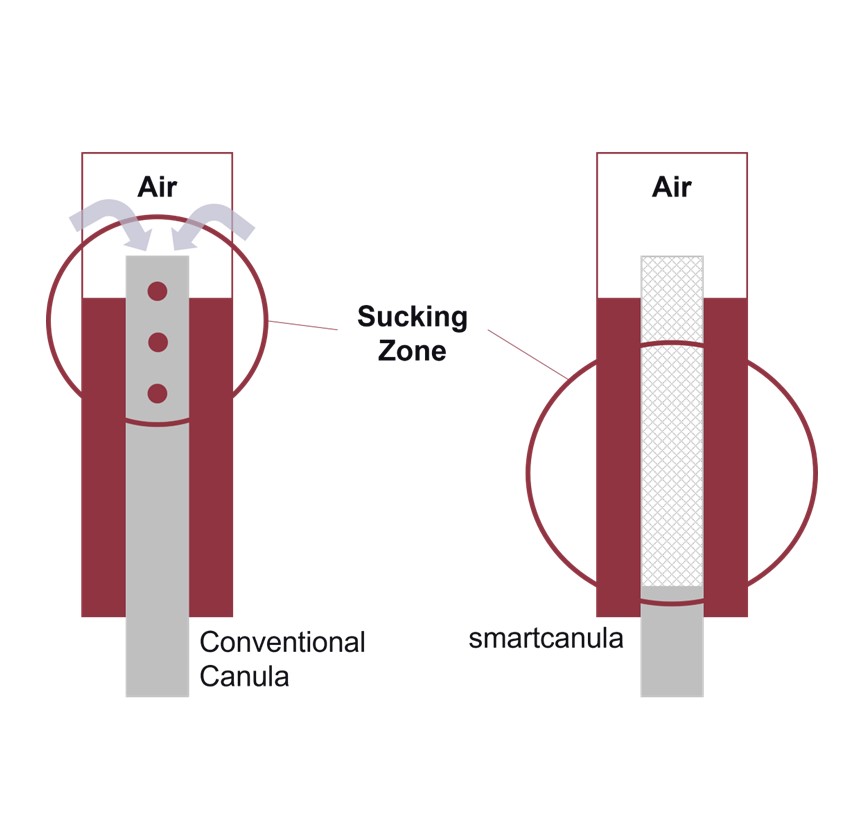
FAQ
These are the four most frequently asked questions with regard to the smartcanula
QUESTION 1 – Insertion Depth
Typically the tip of the smartcanula is placed in the SVC
How far should the smartcanula be inserted into the superior vena cava (SVC)?
The smartcanula should be inserted as far as possible, like the standard procedure with conventional cannulas. The tip should stay in the SVC after mandrel removal.
- The insertion depth of the smartcanula is similar like conventional canulas with an exposed mandrel-tip by ~ 7-9 cm (Pic 1).
- The stretched smartcanula is approximately 10% longer than the
expanded canula. - Upon expansion the smartcanula-tip typically ends up in the SVC. (Pic 2)

QUESTION 2 – Restricted drainage during atrial retraction
The smartcanula works well with atrial retraction
Can the drainage be restricted with using the smartcanula during atrial retraction?
No, the smartcanula is mechanically strong enough to maintain patency during physiological atrial retraction.
- The smartcanula per design encourages you to work closer to physiology to maintain the blood flow as needed.
- The surgeon should pay attention to not retract that far until the vessel including the smartcanula will entirely collapse.

QUESTION 3 – Tricuspid valve repair
The smartcanula works well for tricuspid valve repair
Can the smartcanula be used for tricuspid valve repair?
Yes, the smartcanula even has a lot of advantages when tricuspid repair is required.
- The smartcanula does not suck air when the right atrium is opened
1. compared to standard canulas the sucking zone of the smartcanula is inthe Inferior Vena Cava (IVC)
2. positioning of the patient with SVC a little higher than IVC (anti Trendelenburg position)
3. blood flows from SVC to IVC by gravity in the lower floor of the right atrium - A good cooperation between surgeon and perfusionist is mandatory
- No need to snare SVC and IVC, big advantage in Redos

QUESTION 4 – Mandrel re-insertion for decanulation
The mandrel does not have to be re-inserted for decanulation
Does the mandrel need to be re-inserted for decanulation?
No, re-insertion of the mandrel is not necessary.
- Under traction the diameter of the smartcanula collapses and decreases
- Pulling out the smartcanula supported by gentle vessel compression through finger pressure leads automatically to a reduction of the canula diameter during decanulation
(refer to IFU: English venous 6h 2021 01 23) - Re-insertion of the mandrel maybe risky as with any other canula.